Marudi is a small town in the northern region of Sarawak. Located on the banks on the River Baram some 100 km upstream from the mouth of the river, Marudi was the administrative centre of the northern region of Sarawak before the establishment of Miri in 1910.
The town’s cultural significance lies in it being considered the cultural heart of the Orang Ulu, an umbrella designation covering some 27 ethnic tribal groups in the north-northeastern region of Sarawak. With its location as one of the closest towns to Miri, Marudi is well placed as a gateway to the Kelabit Highlands to the east and, more prominently, the Gunung Mulu National Park.
I had the privilege of spending some time in Marudi as part of my short trip to this part of Sarawak to have a go at the RAS flights. It was an enjoyable 6 hours and a brief look into a little known corner of Malaysia less seen by Peninsular dwellers.
Shout out - Part of my research on what to do in Marudi involved scouring the internet to read up on the town. I’d like to thank Dayak Wanderer and Bombastic Borneo‘s posts on Marudi for being of great help.
Getting to Marudi
The fastest way of getting to Marudi is by air. Marudi is connected to Miri by the Rural Air Service (RAS) flights operated by MASwings. The flights are operated by Viking DHC-6 Twin Otters, and are a great showcase of the aircraft’s capabilities.
Driving to Marudi is not recommended for visitors, as the roads connecting Miri and Marudi are not well developed, run through plantations, and have only a single lane at some points.
How to get around Marudi?
The easiest way of getting around Marudi for day-trippers is, believe it or not, by foot.
For starters, Marudi Airfield is located a very short distance away from the town centre. There is a well-built pedestrian sidewalk running alongside the main road into town, and you can take a pleasant morning walk after you step off your plane.

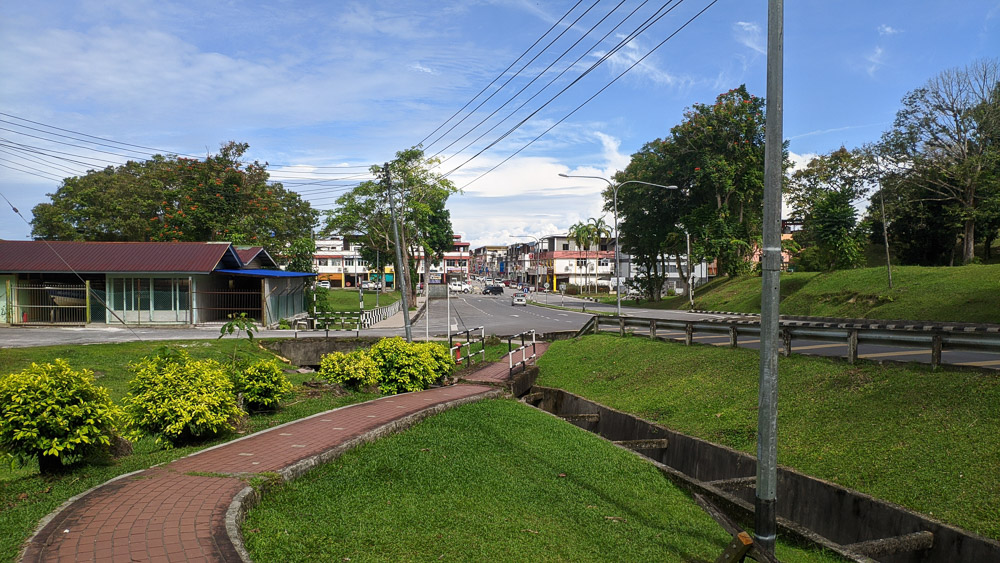
If you’re planning to walk throughout your visit, do beware of the road traffic. Its common to see 4-Wheel Drives and pickup trucks on the roads in Marudi due to its role as a gateway into the interior, and getting hit by one is not something you should aspire to.
Street scenes
Marudi town centre is built in a grid layout, and most buildings are multi-floored shophouses. This is typical of Malaysian urban planning before the focus started shifting to more spread-out suburban developments.
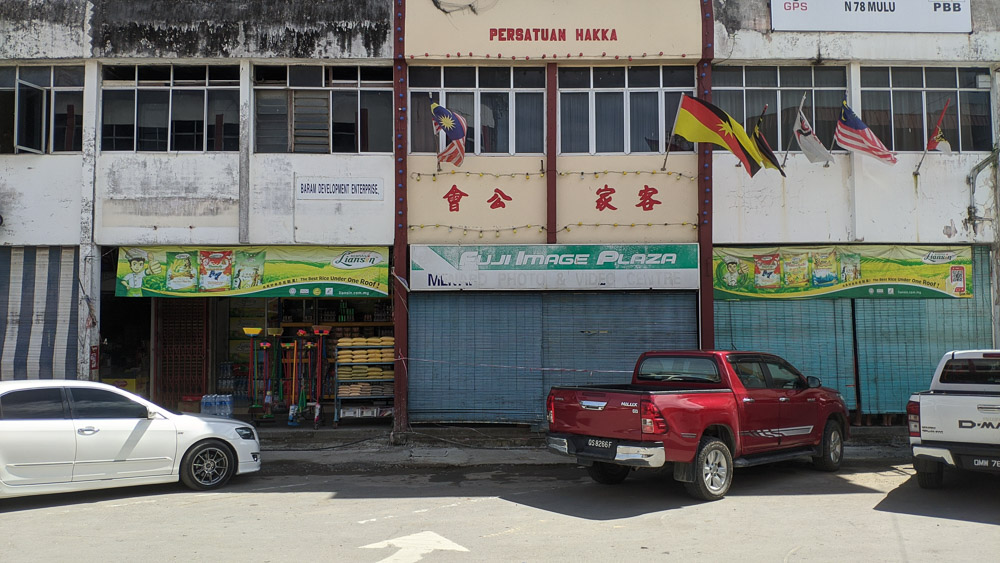
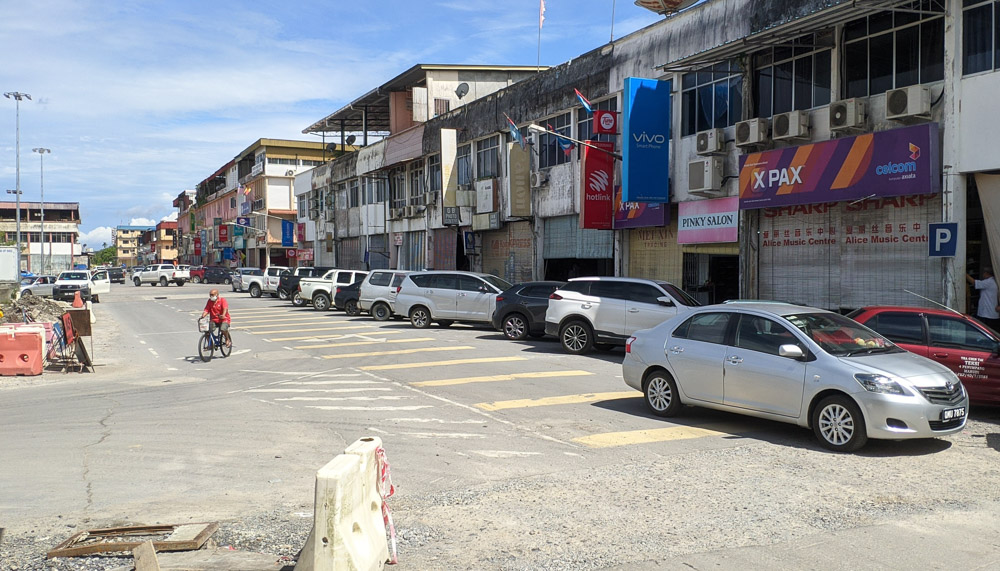
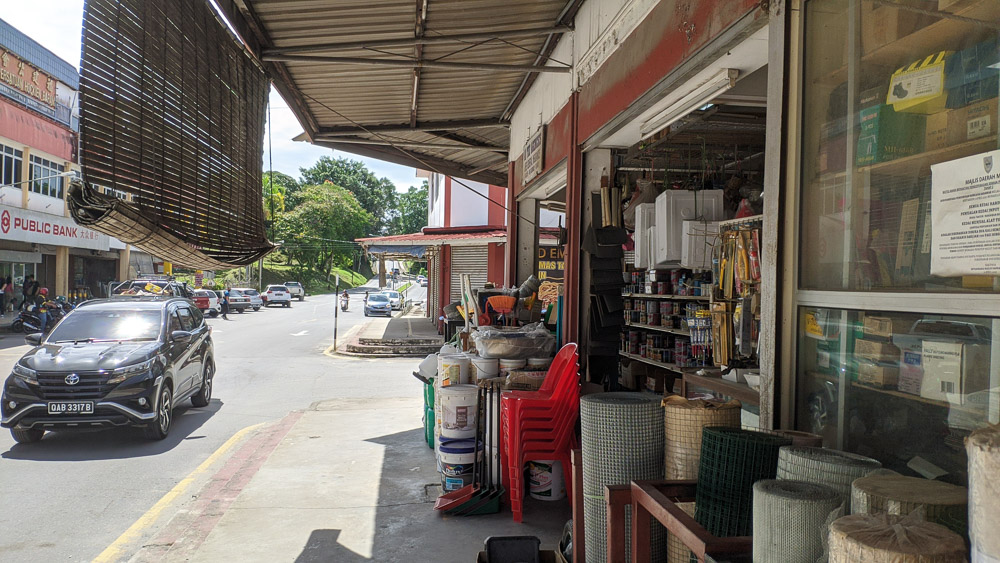
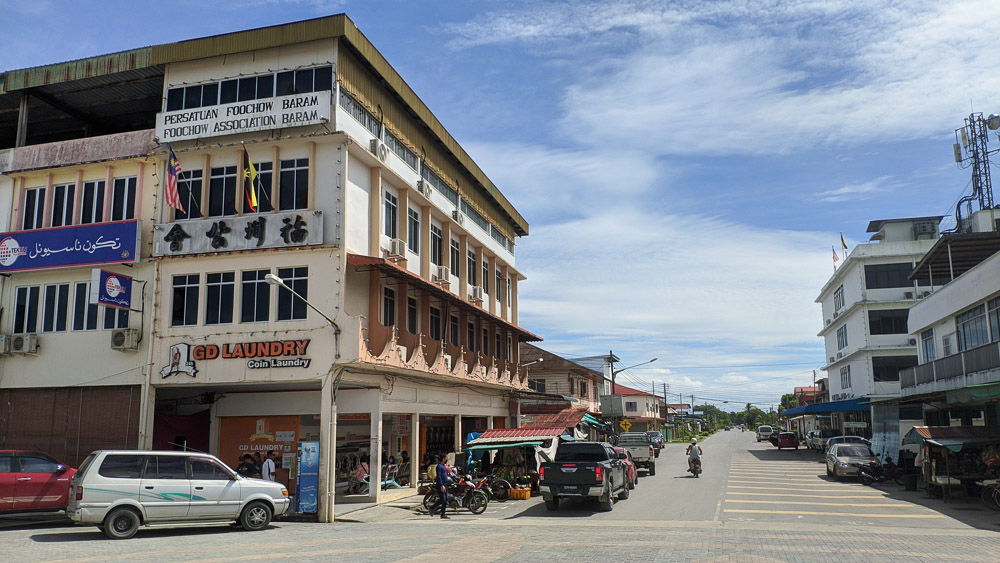
What to do in Marudi?
Planespotting at Marudi Airfield
Marudi Airfield is one of the easiest places to planespot. If you’re heading out of the terminal building, turn left twice and you’ll be able to stand pretty close to the tarmac to catch some very nice and up close pictures of your little aircraft. Walk further down and you can get both the aircraft and terminal in the same shot!
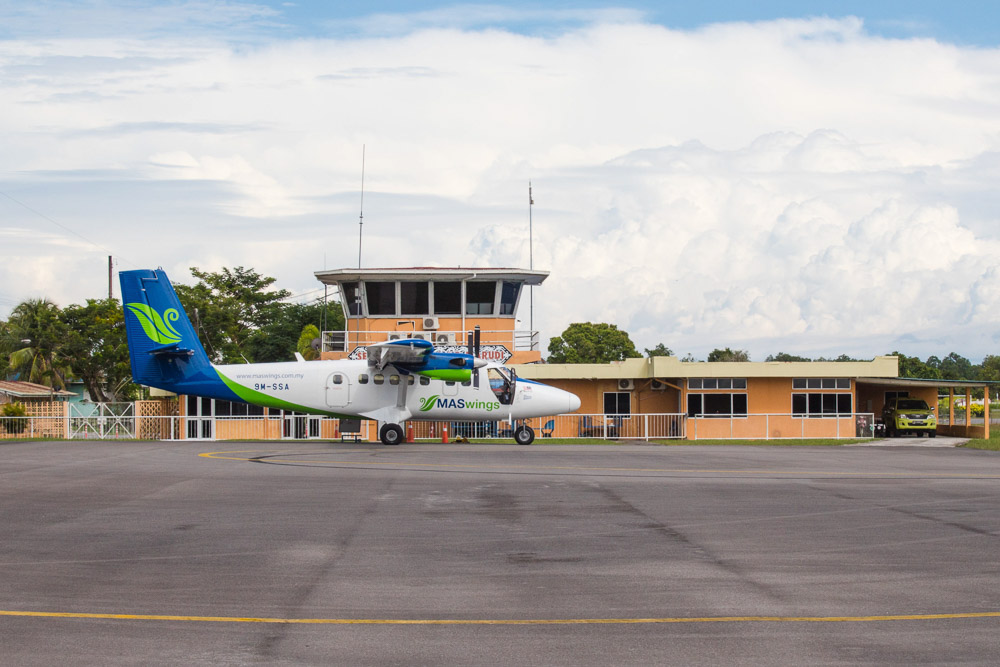
The pedestrian walkway to town also continues on past the terminal and follows the alignment of the runway, making it a great place to spot aircraft taxiing out for take off. You can also get great up close shots as the Twin Otters come in for landing.
It goes without saying that you are responsible for your own safety. Do not trespass, obey security officers if instructed, and don’t do anything stupid.
Fort Hose
An easy site to visit is Fort Hose, located close to town and conveniently sited just off the road leading to the town centre from the airfield. Construction of the fort was completed in 1901 and the structure survived until 1994 when it burnt down in a fire. The structure we now see is a rebuilt version that opened in 1997.
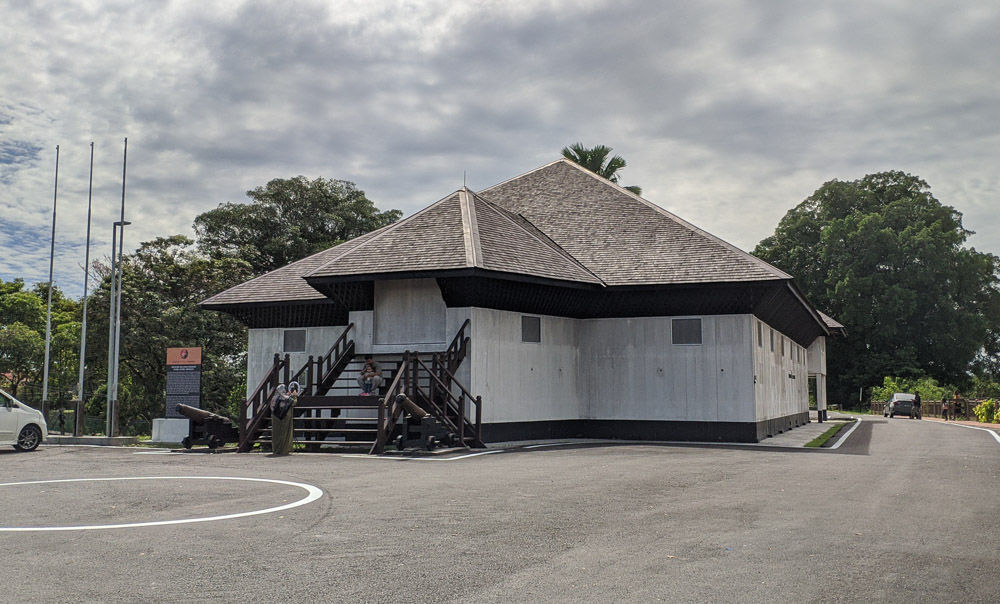
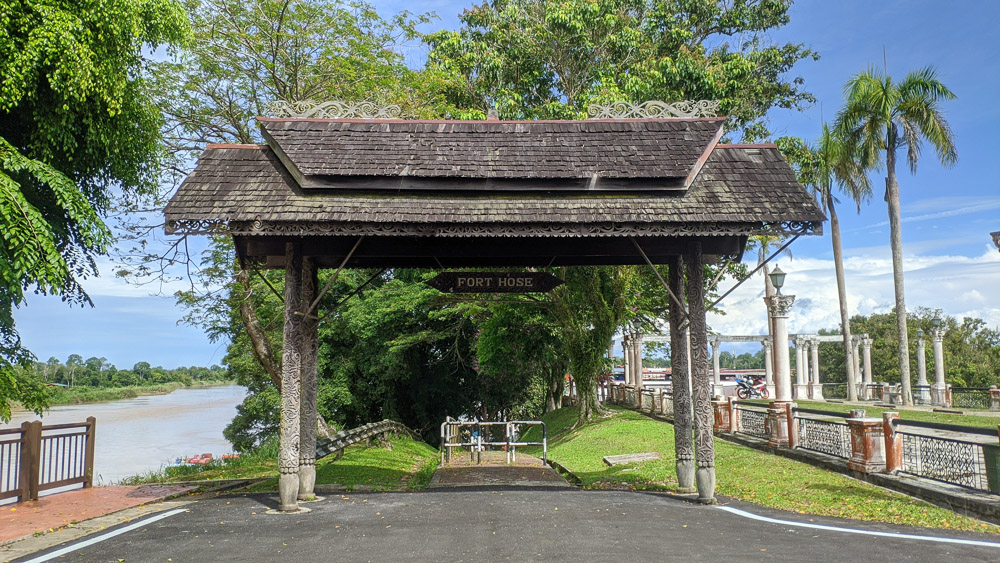
The fort is named after Charles Hose, who was appointed to an administrative role in the Baram District during the Brooke era in Sarawak. If Hose’s name sounds familiar, that’s because he was also an ethnologist, and was effectively the first colonial officer to explore the interior of the Baram District. Hose was also responsible for the collection of a large amount of cultural art, much of which is in the hands of the British Museum today.
Today, the fort houses the Baram District Museum. There’s unfortunately not a lot of up to date information on the opening hours of the museum, and the fort itself was closed when I visited. Nonetheless, the site is still a good place to visit for a nice overview of the River Baram.
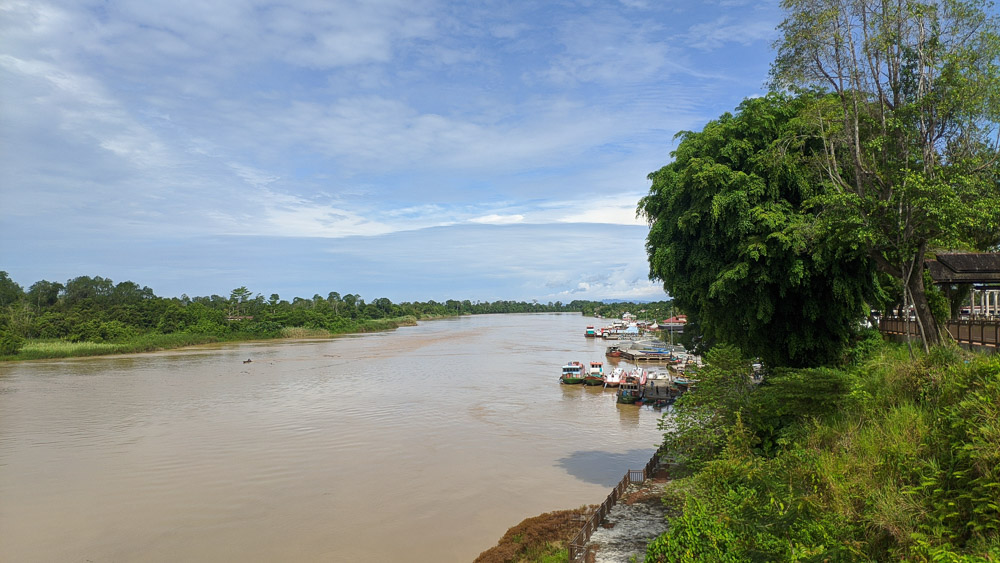
Source and Further Reading:
- “The Charles Host Collection at the British Museum“, Steven G. Alpert
- Biography of Charles Host, the British Museum
Makan-makan: Enjoying Marudi’s Kueh Teow
Over on the Peninsular, Penang’s Char Kueh Teow (Fried Kueh Teow) is the widely acclaimed fried Kueh Teow dish. Head over to Marudi though, and you might be tempted to change your mind about the Penang dish.
Marudi’s Kueh Teow is distinguished by the thickness of its rice noodles. Where Kueh Teows are usually thin, flat and long, the Marudi Kueh Teow is a thick and short variant. A quick glance and you might think it was cut fish cake instead.
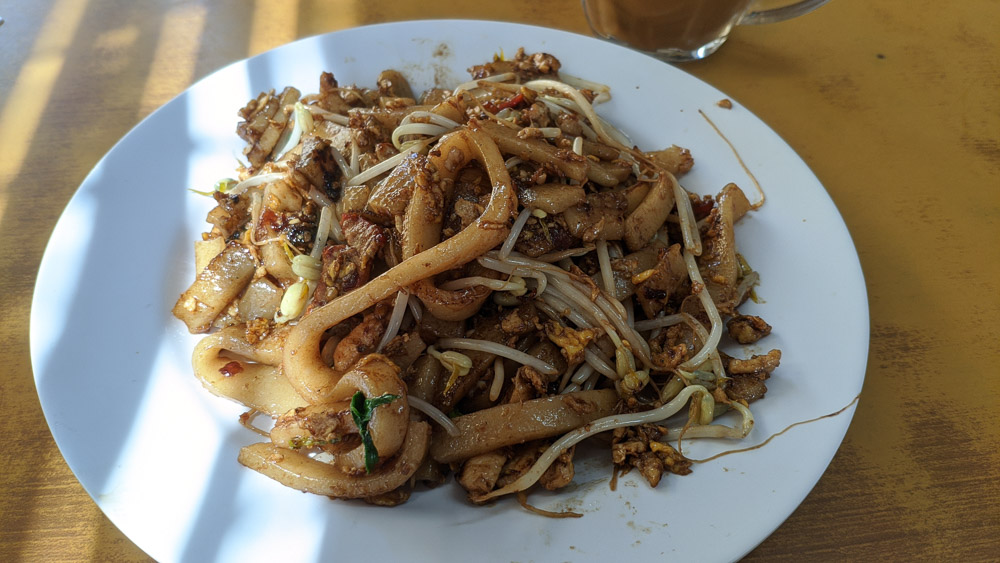
Beyond the Kueh Teow itself, the dish also features taugeh (bean sprouts), slices of Char Siew (roasted pork), all fried together in a wok. This gives it the charred wok hei taste – a requisite of any fried Kueh Teow dish.
The restaurant recommended by Dayak Wanderer’s blog is the Fortune Restaurant. I ordered a plate of Kueh Teow and Kopi (Coffee mixed with condensed milk) for my lunch, both of which were ready fast.
The base taste was similar to a regular Penang Char Kueh Teow, but there was a more sweetness and flavour in the sauce used by the Marudi version. I felt this gave the dish more depth than Penang Char Kueh Teow, and made for a very enjoyable lunch.
Address: Fortune Restaurant, 93, Jln Kampung Cina, 98050 Baram, Sarawak
Google Maps link: https://goo.gl/maps/uSd1Jy9JzmJMscsu7
Note: It goes without saying that the Marudi Kueh Teow at Fortune Restaurant is not halal.
Dessert: Marudi Ice Cream
Marudi Ice Cream is the town’s own ice cream brand. The ice cream comes in a variety of flavours and is sold in small cups that cost RM 2.40 each. The texture is a little frozen at first, but soon softens to yield a pleasant dessert. It’s not as fancy as the big brands, but its a simple cup of ice cream that won’t let you down.
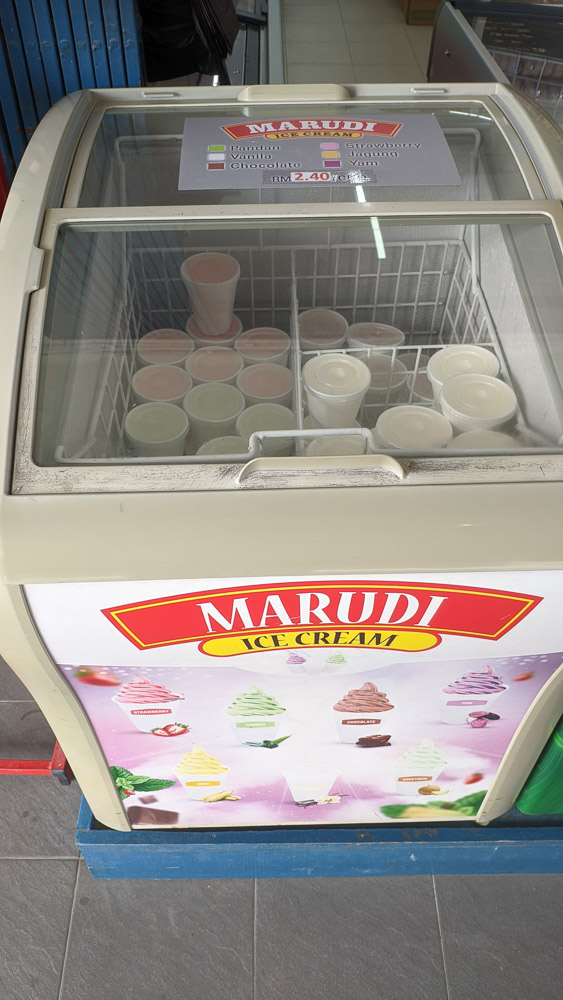
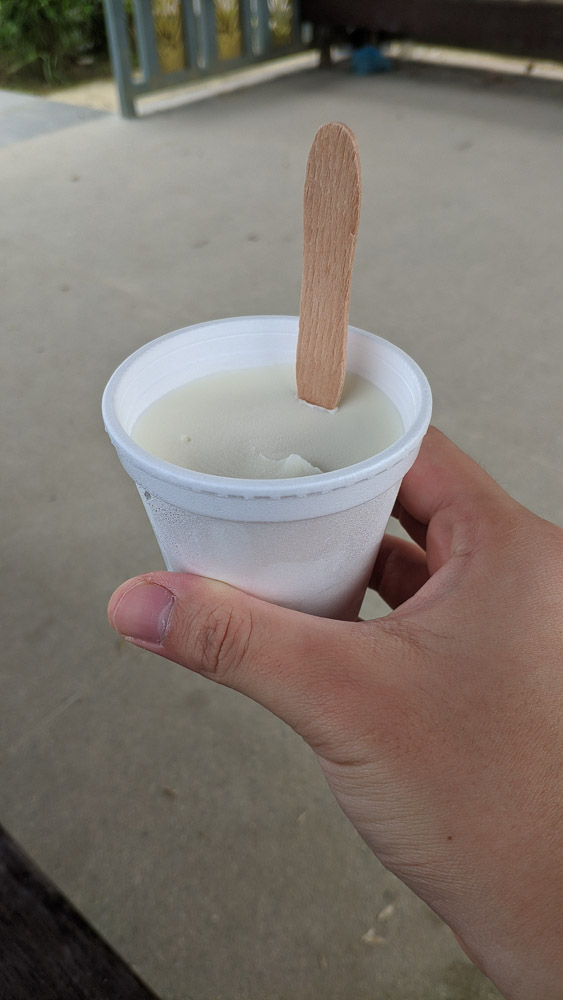
The Marudi Ice Cream is sold from freezers from local grocery shops, so if you’d like one, just keep an eye out for the shops with the freezers placed outside.
Marudi Tua Pek Kong
The Tua Pek Kong temple in Marudi is situated right by the River Baram. The temple was built in 1891, and is the only Chinese temple in Marudi.
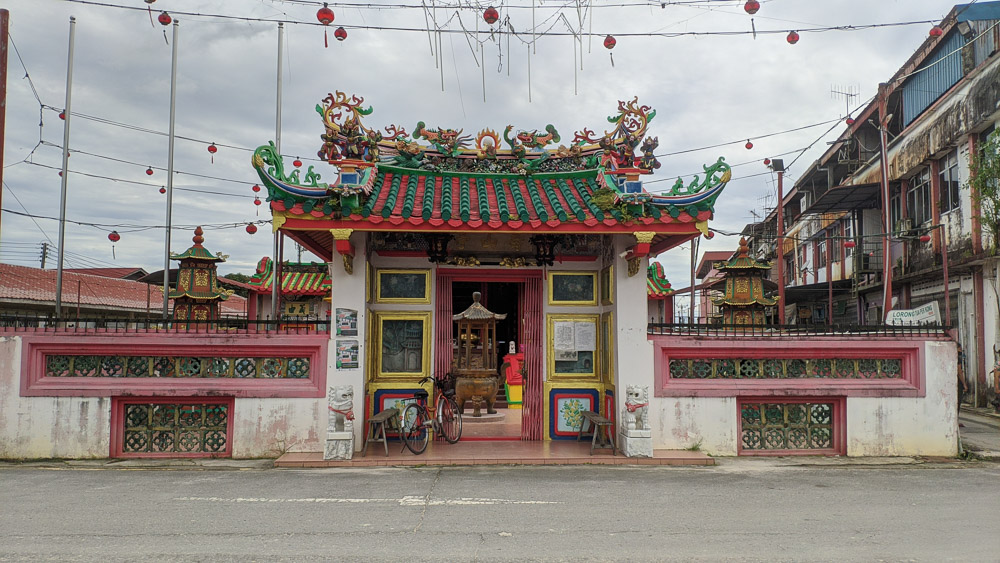
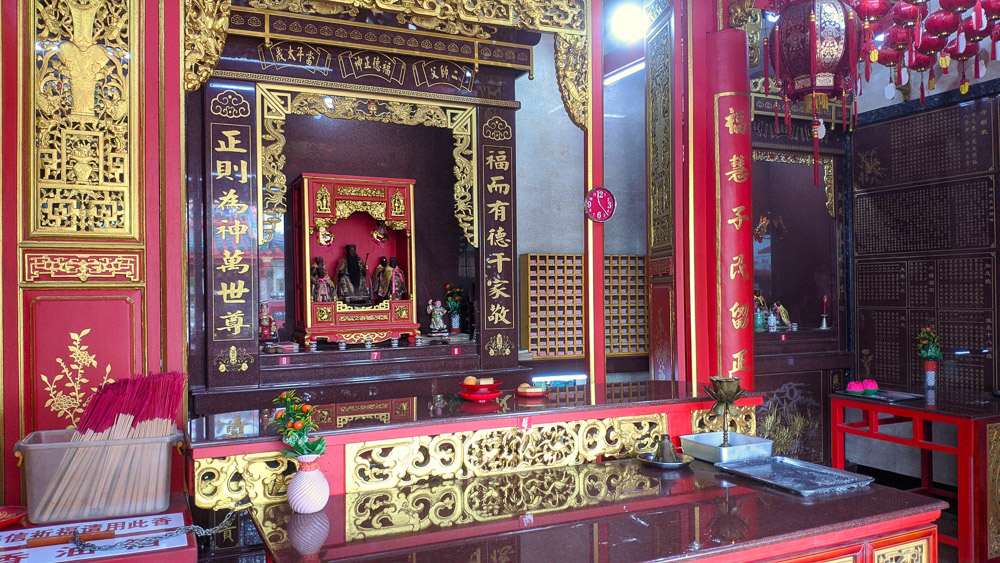
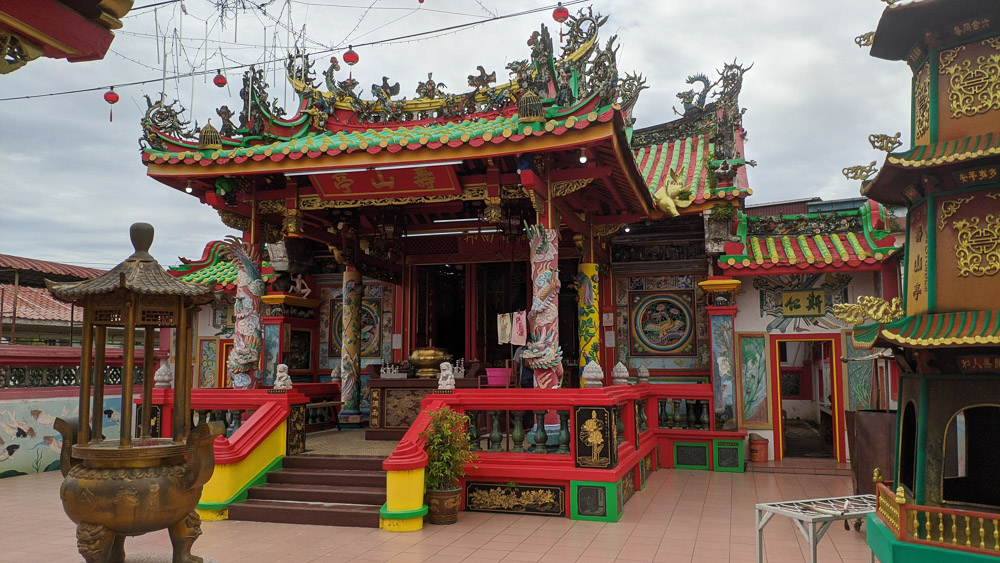
The temple is really small as compared to other Chinese temples elsewhere, but it’s an integral part of the town and is worth a quick visit.
Going for a walk along Jalan Kampung Cina
The well built pedestrian pathway also leads out of the town along Jalan Kampung Cina towards the north. I wasn’t entirely sure how the view was going to be like, but thought it’d be a nice way of burning off some carbs after lunch.
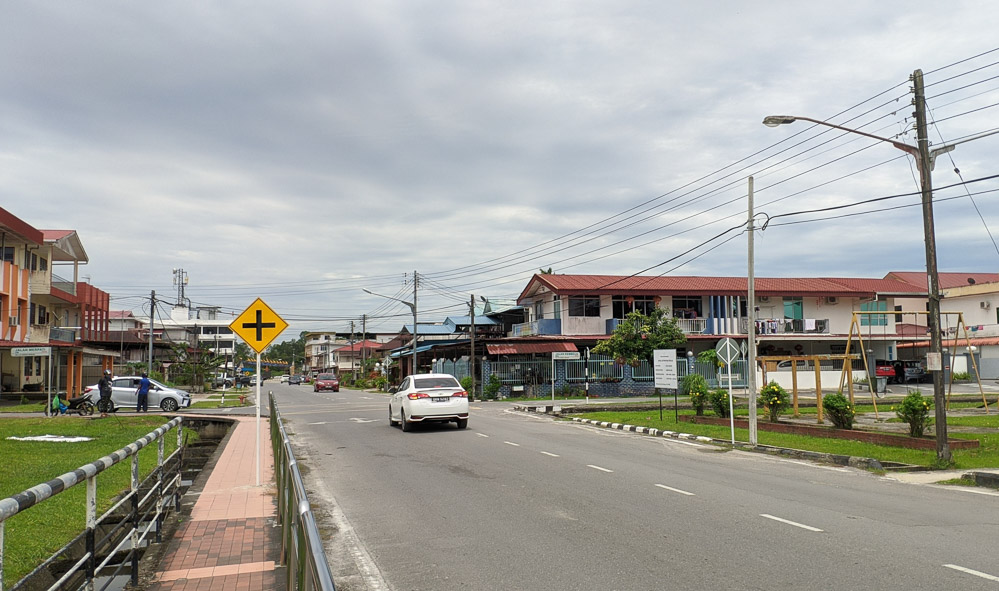
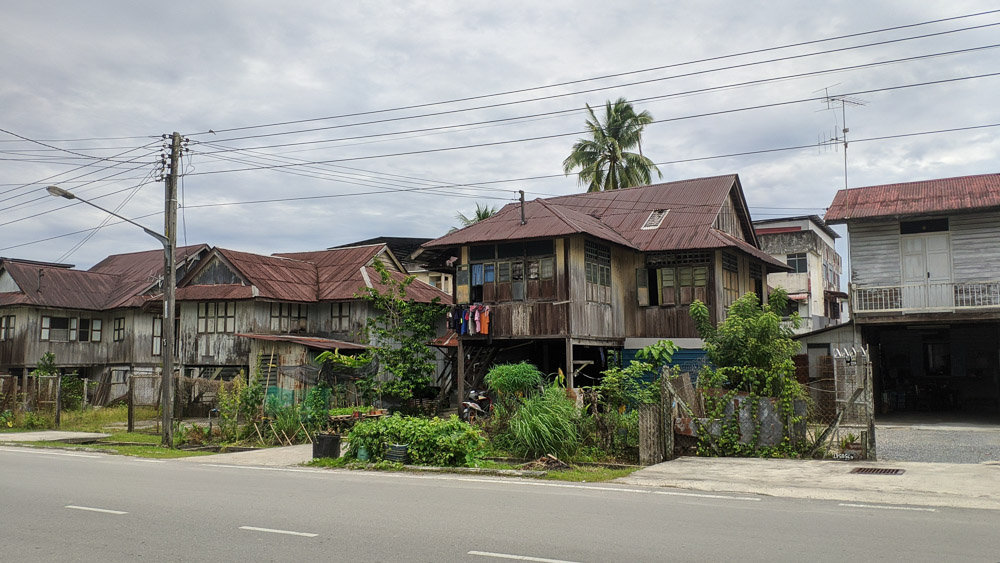
One of the landmarks you’ll past by if you walk along this route is the Marudi Market. The market is usually a hive of activity in the morning, but as I was too focused on the my Kueh Teow lunch the market was empty by the time I took my walk.
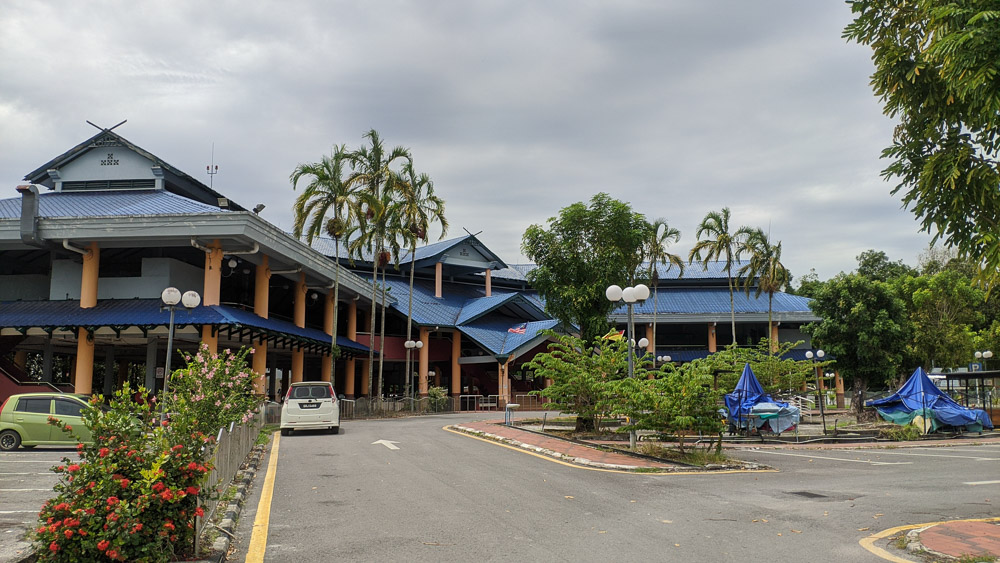
This part of town resembles the suburban areas seen throughout the rest of Malaysia, with houses flanking both sides of the road. Tthe main difference was the consistent pedestrian walkway along one side of the road, which isn’t something you’d normally see in bigger towns like Kuala Lumpur.

If you wanted to, you could theoretically walk to town everyday. But where the usability falls a bit flat is the lack of sufficient tree cover that doesn’t give much shade from the sun.
An interesting sight was this abandoned Seventh Day Adventist Church building that looked like it had been left unused for quite some time. Unfortunately there isn’t much information on the internet about this site.
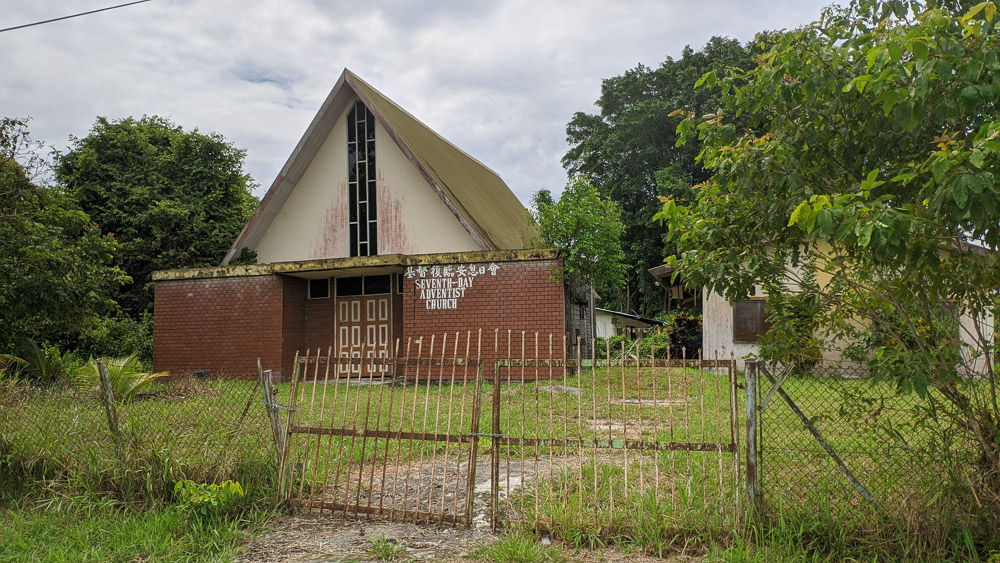
The urban character was different after that point on the road. As I walked further on to the corner where Jalan Kampung Cina meets Jalan Muhibbah, I started leaving the built up compact suburban part of Marudi behind. Ahead round the corner on Jalan Muhibbah was a more kampung-esque layout with houses spaced further apart from each other.
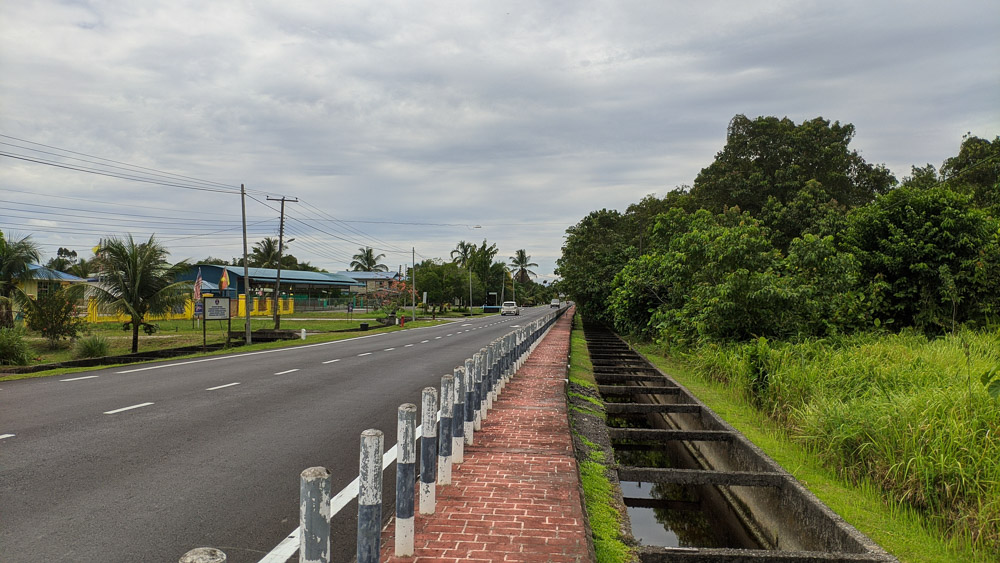
I wasn’t planning on going any further, but a check on Google Maps reveals that this road leads much further east into the jungle area close to the Brunei-Malaysia border. Sadly, the satellite imagery view also shows multiple logging roads crisscrossing the jungle in this part of the state.
Marudi Waterfront
The Marudi Waterfront is a comparatively recent addition to the town’s waterside, with parts of it still being completed. It consists of an open square and a sheltered pavillion right next to the river.
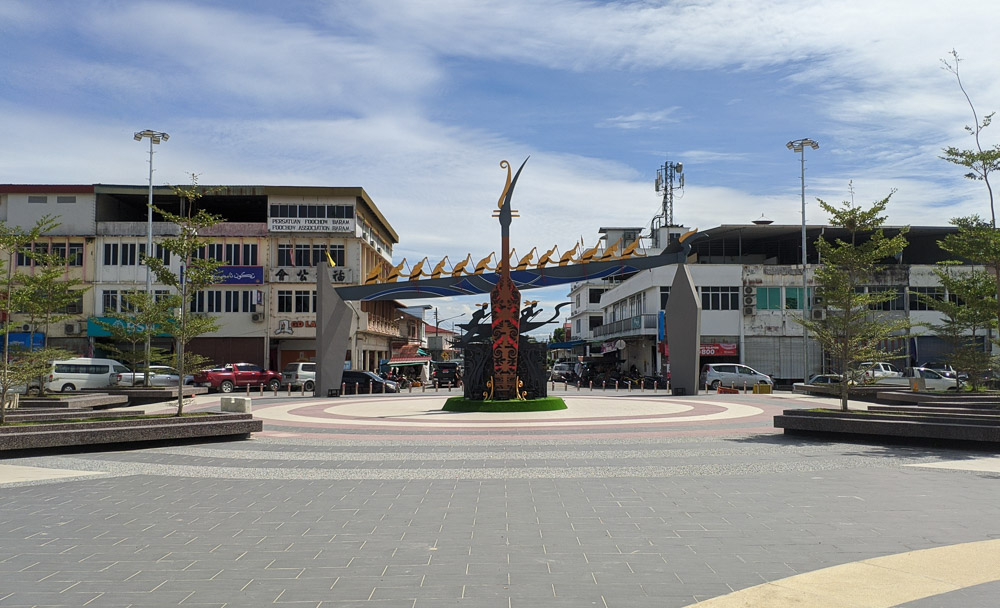
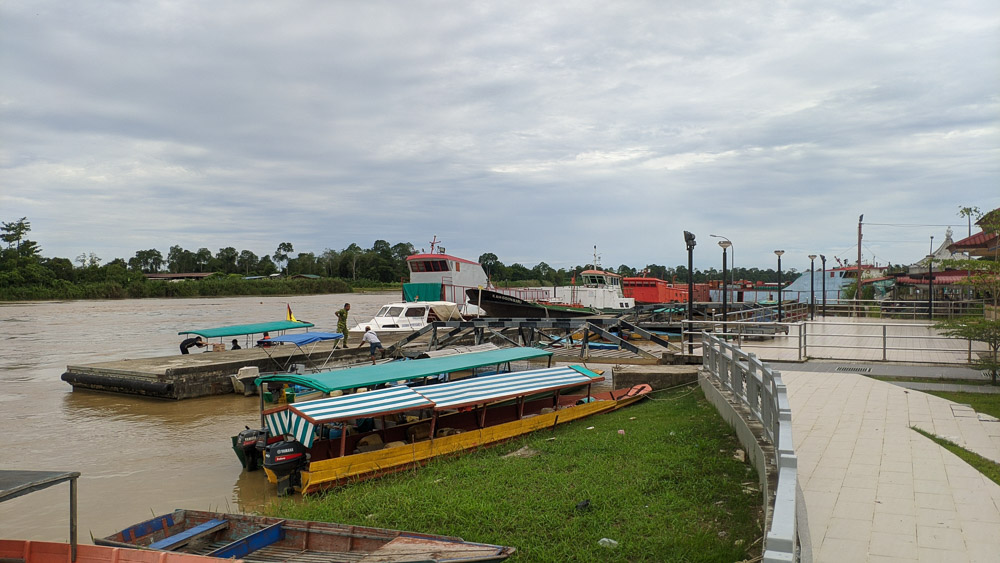
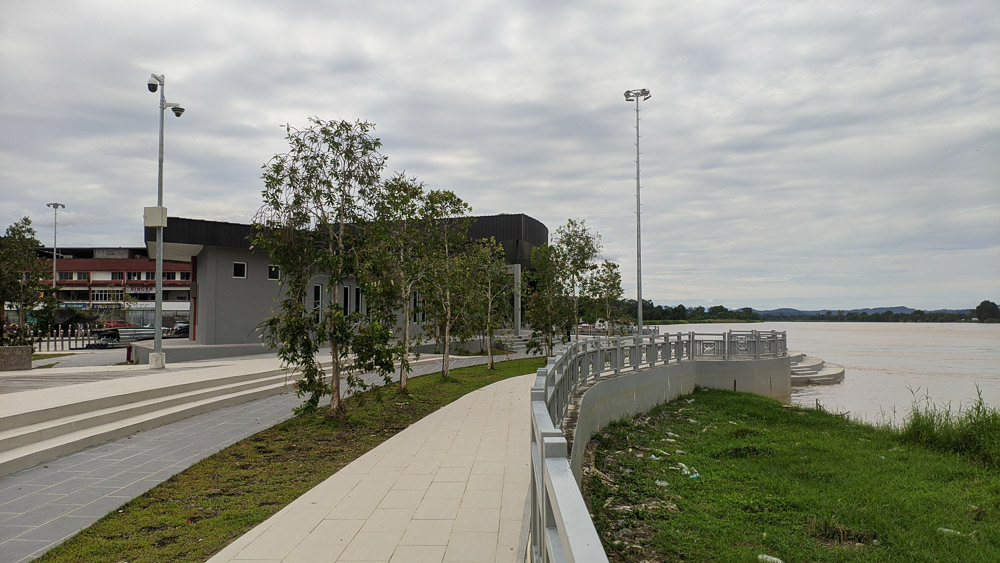
There’s nothing to do here per se, but the Waterfront is a nice place to rest after a walk around town. The steps facing the river are great if you like watching the river traffic, but otherwise there is no proper seating here.
Final Thoughts
This trip to Marudi was something that I had been thinking about doing for some years now. While the main draw was to have a go at the RAS flights in Sarawak, I also wanted to see the non-touristy side of the state – something that wasn’t Kuching, Sibu, Bintulu, or Miri.
Most residents of Peninsular Malaysia are likely to only experience the major towns of Sarawak. Save for the avid trekkers and hikers, many wouldn’t think of venturing east into the interior of Sarawak. This means a good number of Peninsular residents are unlikely to know much about Sabah and Sarawak beyond the major urban centres (none of the friends I spoke to before my trip had even heard of Marudi!) and, more crucially, people are unaware of the gap in infrastructural development between both halves of Malaysia.
To be clear, Sarawak is a big and diverse place. Marudi isn’t representative of Sarawak, and the rest of Sarawak certainly isn’t representative of Marudi. But when we are confronted with the enormity of diversity and knowledge of our own lack of knowledge, the most logical reaction is to actually take the first step into the great unknown.
So the next time you’re in Sarawak, rent yourselves a car and drive out of the cities. And if you’re in Miri, why not visit Marudi?
Read next:



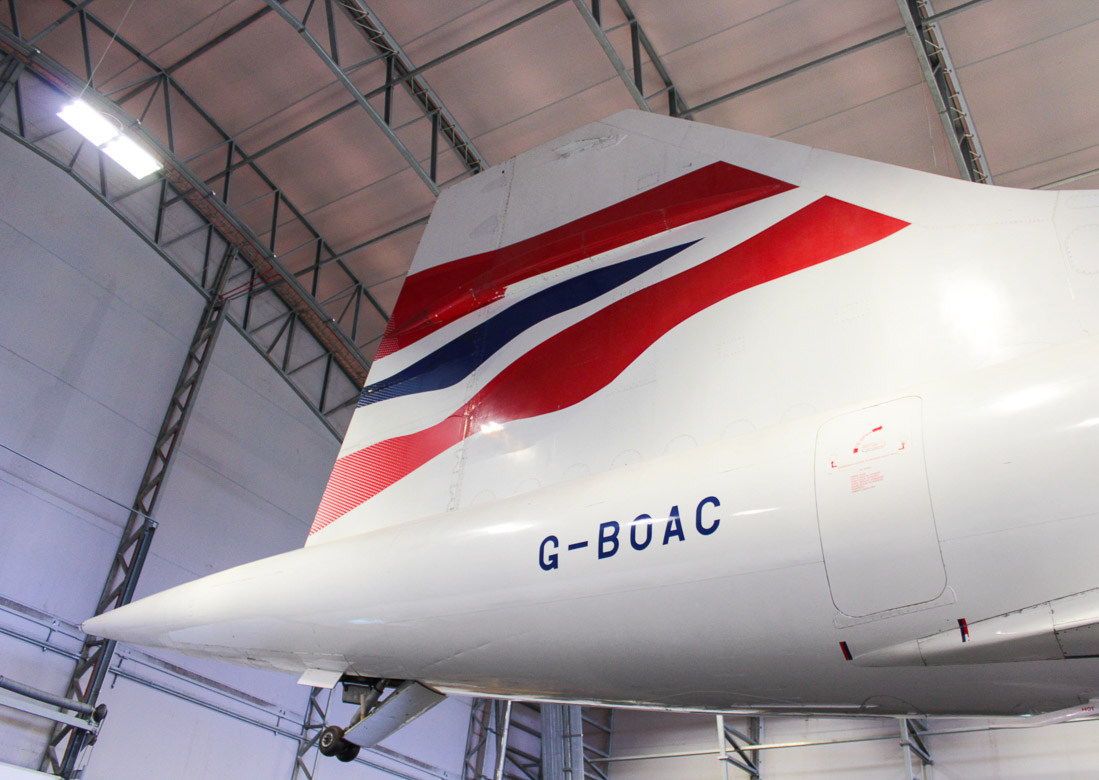
Comments
One response to “Town on the Baram: Spending 6 hours in Marudi, Sarawak”
[…] about my exploration of Marudi here, and the return flight to Miri […]